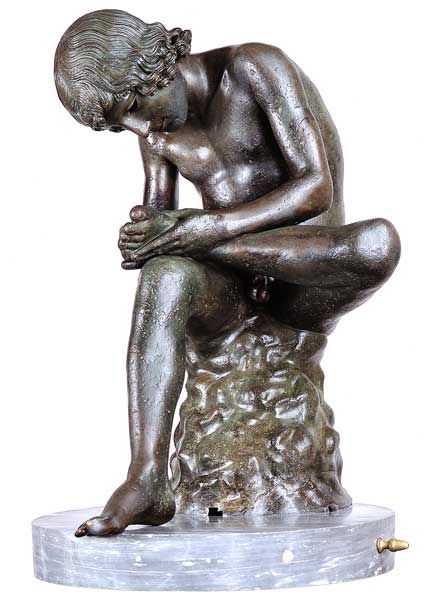
For the post-literate, he also sells a video on iron, steel, and aluminum patination. I highly recommend the books on ceramic-shell casting and patination, available from his company Sculpt-Nouveau, 1-80.

In the Nov-Dec ’95 issue of Fabricator magazine (e-mail for info) Ron Young, the great guru of patination, offered an overview of the subject of ferrous metal patination. It is possible to add pigments or dyes to this clear protective coating for further color variations. Or you can use linseed oil to seal your basic rust “patina”. Renaissance Wax, available from Bryant Labs in Berkeley, California (51), along with a good collection of patina chemicals, is formulated for this purpose, but regular paste wax works pretty well. Especially when outside, the atmosphere will have an effect on most unprotected patinas. Never scrub against the grain, since doing so may cause unsightly scratches. Only scrub in the same direction as the grain of the brass. Scrub the coated metal thoroughly using a piece of 0000 steel wool. When a patina has been applied, it is usually waxed to preserve the color. Sprinkle baking soda over the surface of the brass.
#BRONZE PATINA RUBBER GLOVE SKIN#
The skin areas are left with a traditional liver bronze patina. If you are doing this in anything less than a state-of the art lab facility that is equipped for such things, avoid the temptation to mess with some of the most toxic chemicals, no matter what a good job they are supposed to do remember, you can usually pay a foundry to patina your work, even if they didn’t cast it. The second layer of rubber has a thixotropic agent added to allow it to be applied like butter. ISBN 0-8230-0295-0, and try to choose the chemicals that are least toxic whenever possible.
#BRONZE PATINA RUBBER GLOVE MANUAL#
Get a good handbook for patination like Ron Young’s as well as a manual of toxicology like Michael McCann’s Artist Beware (1979), Watson-Guptill Publications, New York, N.Y. Never add water to concentrated acid-it can boil up into your face-add acid to water. Be sure to use nitrile (chemical resistant) rubber gloves, chemical-splash protective goggles, rubber aprons, and respirators with cartridges approved for acid gasses. Please bear in mind that patination can be a hazardous thing to do: the chemicals are often highly poisonous by inhalation or skin contact, not to mention what happens when you splash them in your eyes. Various colors are possible with ferrous metal, from rust red to whites, browns, and greens. Birchwood-Casey makes a “presto-black” cold patina for steel that is supposed to be fairly good, and works as a base for further patination. Some even apply copper-filled lacquers to the surface of their steel, then patina it like bronze.Īlthough nothing is forever, there are some patinas that are more or less permanent. The principle is the same as when applying a patina to bronze, but steel is supposed to be a bit more difficult, and the range of colors that have been worked out is more limited. A: Different steels need different treatment, but basically the same preparation: the raw steel must be sandblasted clean, then immediately treated with patina, which is generally an acidic chemical that produces oxides on the surface of the metal.


 0 kommentar(er)
0 kommentar(er)
